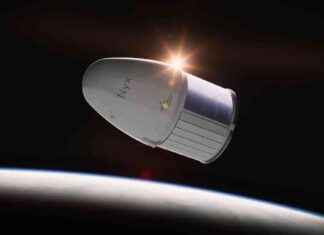BAGHDAD—Iraqi forces have launched the push for Mosul’s militant-held western half just over four months after the operation to retake the city from the Daesh officially began.
The fight for Iraq’s second largest city — roughly split by the Tigris River into an eastern and a western section — has seen periods of swift territorial gains as well as weeks of gruelling urban combat with high civilian and military casualties. Iraqi and U.S.-led coalition officials say they expect the fight for the west to be more difficult as it is denser, with narrower streets, and home to more civilians.
In the days after Iraqi forces announced the wstart of the Mosul operation, Iraq’s special forces quickly retook a handful of largely empty villages along the city’s east that brought them to Mosul’s edge in early November. Once inside the city the tempo of operations changed dramatically, with barrages of car bombs inflicting heavy military and civilian casualties.
Iraqi forces repeatedly advanced too quickly into Mosul’s eastern neighbourhoods by day, only to face punishing counterattacks by night. However, as Iraqi forces closed in on the Tigris River, they began to see swifter progress.
Read more:
Suicide bombings in Mosul kill 5, Iraqi officials say
Daesh in Mosul and Raqqa will be defeated ‘within the next six months,’ says U.S. official
Eastern Mosul ‘fully liberated’ from Daesh, Iraq’s PM says
Iraqi and coalition officials say this was due to new tactics and better co-ordination between the disparate forces fighting in Mosul, but Iraqi troops on the ground say Daesh defences simply began to thin, allowing them to secure swifter gains.
As in the fight for Mosul’s east, Iraq’s special forces are expected to take the lead in the battle for the west. The U.S.-led coalition will continue to closely back Iraqi forces with both airstrikes and raids into Daesh-held territory aimed at taking out key leaders and sowing unease.
There are now some 6,000 U.S. troops in Iraq and last month was the first time the Pentagon confirmed that U.S. forces are working inside Mosul.
When the U.S.-led coalition began the fight against Daesh in Iraq, Pentagon officials insisted there were no “American boots on the ground.” Since then, U.S. forces have steadily built up in Iraq and moved closer to front-line fighting.
Iraq’s militarized federal police, U.S.-trained rapid response units and the Iraqi army will also participate.
Iraq’s government-sanctioned Popular Mobilization Units — mostly Shiite militias — have held the western edge of Mosul’s outskirts and have pledged to participate if their help is needed. In the past, Iraq’s prime minister has sought to limit their involvement in majority Sunni urban areas due to reports of abuses from human rights organizations.
Iraqi and coalition officials say the biggest difference in the fight for Mosul’s west will be the terrain. The western half of the city is home to some of Mosul’s oldest neighbourhoods, with narrow streets that will force Iraqi forces to dismount from their armoured vehicles. Even Iraq’s special forces — some of the most competent fighters in the military — have so far largely fought the Mosul battle from inside their vehicles, rather than moving house-to-house on foot, in an effort to limit military casualties.
Iraqi forces are expected to push into western Mosul from the south near the city’s international airport. Iraqi forces had initially planned to advance on the city from the east and south simultaneously, but as they became bogged down in eastern Mosul, the southern front was put on hold.
Iraq’s militarized Federal Police retook the village of Hamam al-Alil in November and since then the front has barely moved as some units were dispatched to eastern Mosul. On Sunday morning, shortly after the new push was announced, police units moved into the village of Athba, southwest of the city’s Daesh-held airport, while the army’s 9th Division moved into the southwestern village of Bakhira.
Eastern Mosul was declared fully liberated in January, but has since seen several militant attacks as Iraqi special forces pull out of the east and Iraqi army units, with less training and experience, take over.
Iraqi officials have warned that there is a high probability that small groups of Daesh fighters have remained in Mosul’s east and will continue to carry out attacks.
The United Nations estimates that some 750,000 civilians are still living in Mosul’s west and has described conditions there as “siegelike.” Civilians who have escaped the western half of the city say food is running out as the wealthiest have stockpiled all the goods that were available in stores.
Aid groups are considering airlifting supplies into Daesh-held neighbourhoods, a Western diplomat who was not authorized to brief the media said on condition of anonymity.
The Toronto Star and thestar.com, each property of Toronto Star Newspapers Limited, One Yonge Street, 4th Floor, Toronto, ON, M5E 1E6. You can unsubscribe at any time. Please contact us or see our privacy policy for more information.
Our editors found this article on this site using Google and regenerated it for our readers.





